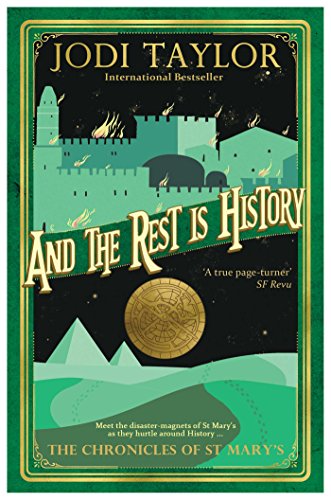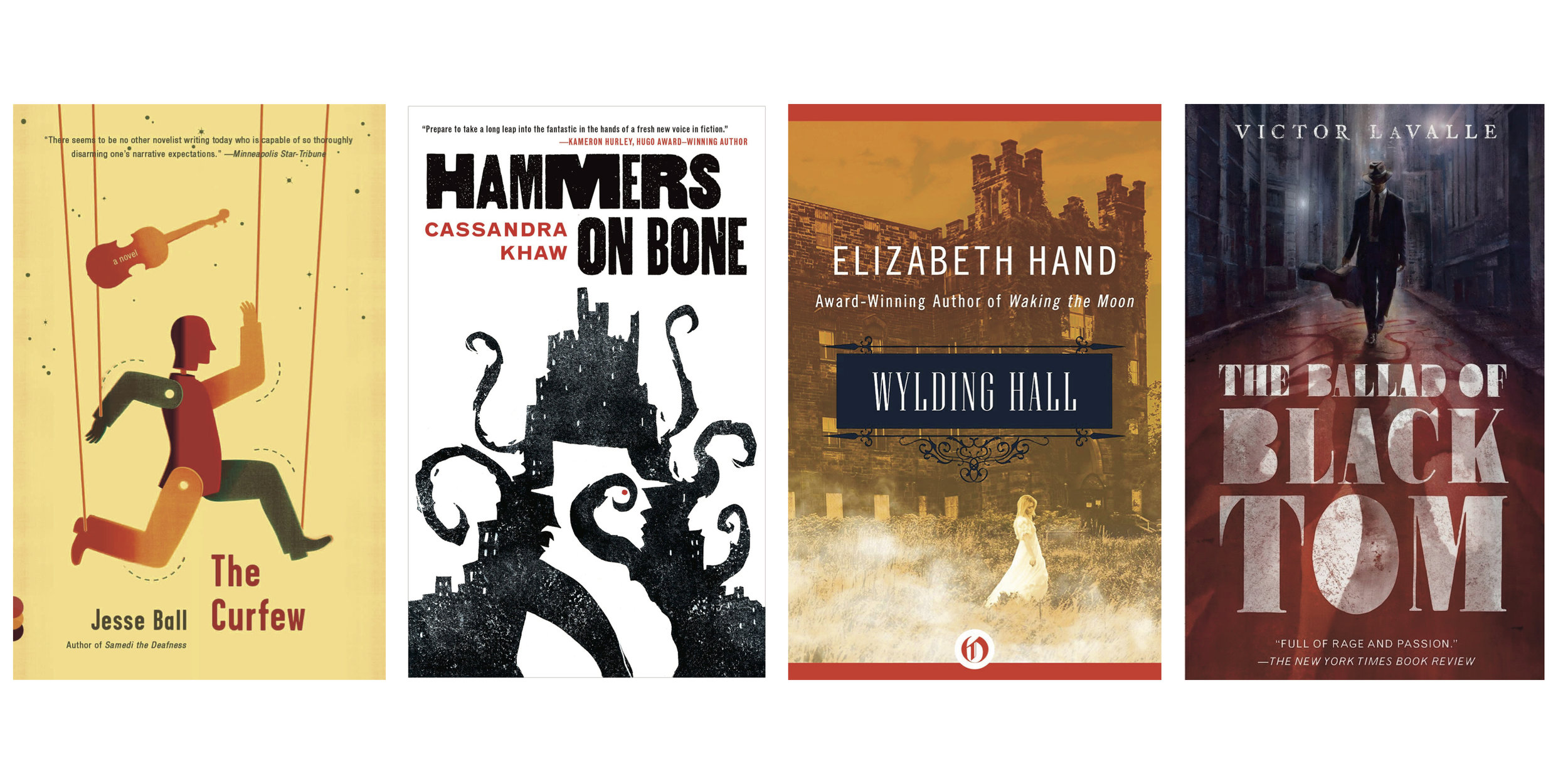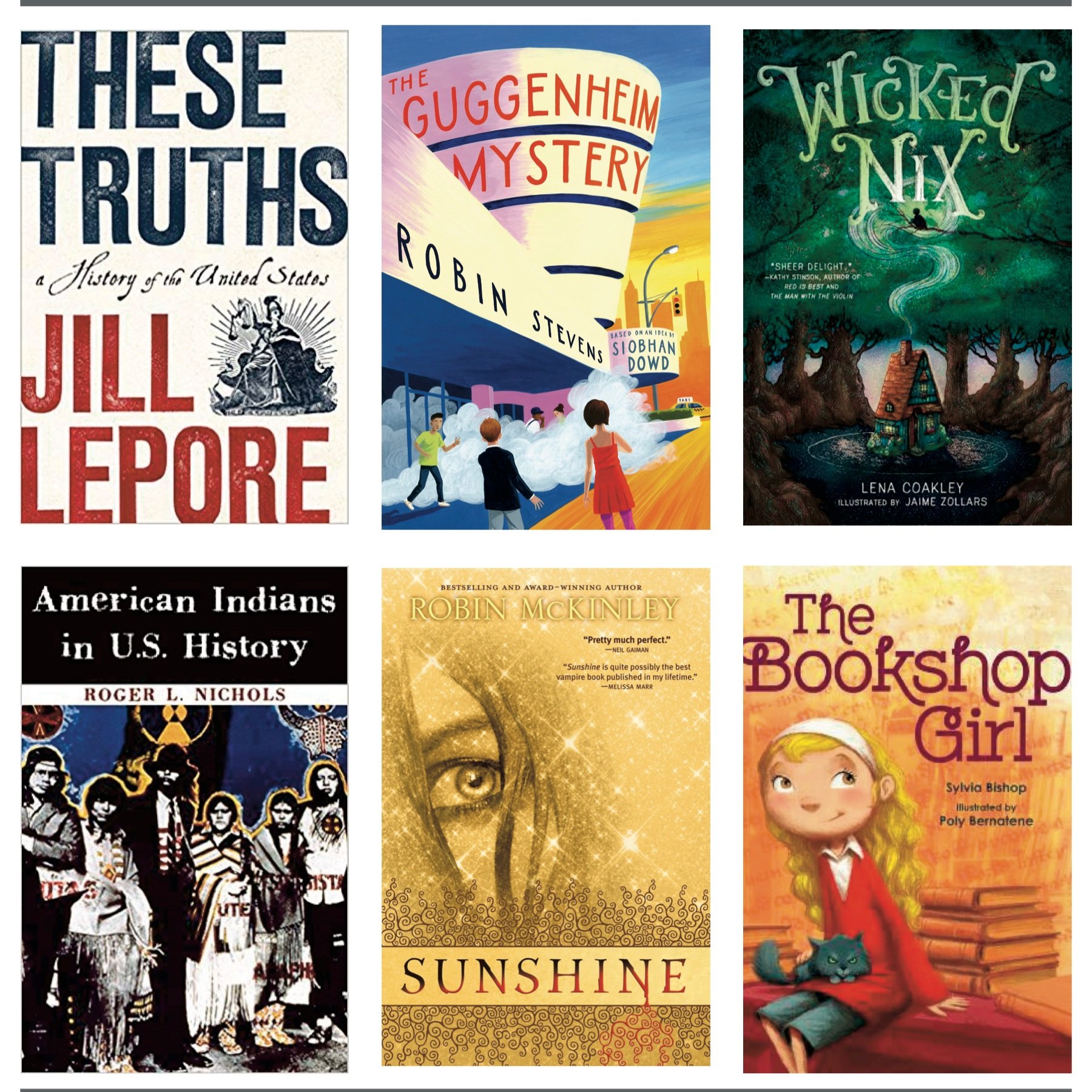What I'm Reading: 1.8.19
Suzanne is continuing her Library Chicken sabbatical into 2019 (though she is still providing many of the book recommendations you read here!), so I’ve decided that since, let’s just be honest, I cannot fill her shoes, I’m just going to do a casual roundup of what I’m reading without keeping score. I read too many non-library books to keep Library Chicken interesting, and I am just not as brazen with my checkouts and holds as Suzanne — though you should definitely still play if you want to! (The rules are here.) You should chime in with what you’re reading, too!
I always start the New Year on a burst of reading energy, and this year I’m doing a great big crazy reading challenge, too — which, of course, means that I am constantly being tempted into reading books that don’t meet any of the challenge requirements, which is hard since the challenge list is apparently endless, but there you have it.
The Quiche of Death by M.C. Beaton
I picked up this cozy mystery on a Kindle deal just to see if I’d enjoy it — and I did, but not enough to actively seek out the next books in the series. (I do love the series with Ashley Jensen — who will always be Christina from Ugly Betty for me! — though. It is just the right mix of entertainment, British accents, and gorgeous scenery to have going in the background for complicated knitting projects.) Agatha retires from her successful life in London to a Cotswolds cottage, where she has trouble fitting into the community of locals, especially when her entry in the village quiche competition ends up poisoning the judge. Agatha makes up her mind to solve the murder and clear her name, apparently kicking off an entire second career as an amateur sleuth.
Beauty by Robin McKinley
Robin McKinley has written more than one retelling of Beauty and the Beast, but this is the first one I read, back in the 1980s via Scholastic book order, I believe. (Don’t you wish they had Scholastic book order forms for grown-ups?) Her other Beauty retelling, Rose Daughter, is really lovely, but I DO NOT recommend reading the two books close together — they are so different, it feels like losing the rhythm halfway through the song. (Rose Daughter is technically a better book, but Beauty is the one I like best.)
It had been many years since I last read Beauty, and I was pleased to find that it was as lovely and lyrical as I remembered. Beauty, the youngest and least beautiful of three sisters, is the daughter of a wealthy merchant in some 18th century world — I’m guessing based on the fashion (fancy ballgowns), literature (printed books in large quantities), and methods of conveyance (horses and wagons). When her father loses all his money — and her oldest sister loses her sailor fiancé — in an unfortunate series of shipwrecks, the family leaves the city to live with the second daughter’s fiancé, who is returning home to the country to work as a village blacksmith. The country is mysterious, and their cozy new home abuts a mysterious forest that no one enters. Of course, you know the story: On his way home in a storm, the merchant gets lost in the forest and finds a magical castle, where he’s fed, sheltered, and protected through the night. On his way out of that enchanted place, the merchant stops to pick a rose for Beauty in the garden, and the Beast of the castle shows himself, enraged: The merchant must trade his own life or his daughter’s life for the stolen flower. And so Beauty, who is brave and loyal and also ready for an adventure of her own, goes to live with the Beast in his magic castle, where she slowly falls in love with him, eventually breaking the curse that turned him into a Beast in the first place.
Beauty and the Beast is a problematic story, of course — most of the time, you cannot make a monstrous man turn into a prince with just the power of your love, right? But I love this book anyway. I love how McKinley stays true to the original fairy tale, both in the beats of her story and in its dreamy, otherworldly tone. And I love that all of her characters are likable: Beauty’s older sisters are beautiful, but they are kind and practical, gentle and supportive. (It’s notable that neither of them is interested in marrying a prince — or even an earl!) Her father is a kind, hardworking man who does his best. There are no bad guys in this fairy tale — even the Beast, appearances aside, does not act like a monster (apart from the whole you-must-live-with-me-forever thing, which, okay, is pretty monstrous). Rereading this makes me want to put together a comparative literature class focused solely on Beauty and the Beast.
A Tangled Web by L.M. Montgomery
I almost always reread an L.M. Montgomery book on New Year’s Day. This one is one of my favorites: When Aunt Becky dies, the Dark and Penhallow clans are in a frenzy about who will inherit the Dark jar, and Aunt Becky stokes the fire by telling them that the lucky legacy won’t be announced until a year after her death — which means their behavior during that year might well be the determining factor in who gets the sacred but utterly hideous heirloom. Marriages, quarrels, reunions, breakups, and much drama ensue during that chaotic year, which ends up with everyone right where they should be.
I reread a whole spate of Agatha Christie books because there was a huge Kindle sale on them. I have a soft spot for Agatha Christie books, which are the literary equivalent of potato chips in a good way — I can never read just one.
This is a weird little collection: The mysteries are all riffs on mysteries that appear in other Christie books, but the non-mystery stories are odd and haunting. “The Lonely God,” about two people who fall in love at a museum exhibition, and “While the Light Lasts,” about a woman on her honeymoon who discovers that her killed-in-combat first husband is still alive, are good examples.
Again, nothing really surprising in this collection, but it’s notable as the first appearance of Countess Rossakoff, the over-the-top Russian émigré/criminal who always charms Poirot.
I’d forgotten how little actually happens in this book! It’s a great locked-door mystery: An American gangster is murdered in his locked compartment on a snowbound train, and everyone on board has an alibi. (I really liked the Kenneth Branagh adaptation when I saw it, and I liked it even more after reading this — all those narrow compartment shots really emphasize how confined the space on the train is.)
There is almost no actual mystery here, but the narrator Anne Anne Beddingfeld is delightful. (And is this the first book with Colonel Race? I believe it is.)
This was always one of my favorite Christies, and I think it’s the next adaptation Kenneth Branagh has lined up. (Edited to add: It is! And apparently Gal Gadot is playing Linnet Ridgeway!)
Weirdly, this is the first Agatha Christie I ever read — I think I picked it up in a beach rental on vacation. It doesn’t feature any of the usual Poirot/Marple people (though Colonel Race does make an appearance), but it definitely got me hooked on Poirot. Beautiful Rosemary Barton committed suicide at her birthday dinner, and a year later, her grieving husband dies exactly the same way — which means Rosemary was murdered, and a lot of people had reasons to want the glamorous socialite out of the way.
Another untraditional Christie: A young man finds himself caught up in a weird mystery featuring a murdered John Doe discovered in the house of a blind woman by a secretary who was mysteriously summoned to the scene to make the discovery.
And the Rest Is History by Jodi Taylor
Number nine in the Chronicles of St. Mary’s series, which is about a band of time-traveling, tea-drinking, trouble-making historians. I am so fond of this series, which is the literary equivalent of a binge-worthy television series, and even though this is a pretty dark entry in the series, Taylor leaves the door open for some happy endings in book 10. (PLEASE GIVE US THE HAPPY ENDINGS, ESPECIALLY FOR PETERSON.) If you’re already reading this series, you’ll want to pick this up, and if you aren’t, there is really no way to explain what is happening at this point. It’s all very complicated with multiple timelines.
Deadfall by Stephen Wallenfels
This was an advance reader copy. Twin brothers on the run discover a girl locked in the trunk of a crashed car in the middle of nowhere, which means they’re now also on the run from her kidnapper, who — surprise! — may be someone they already know. I’m sure there’s an audience for this book, but it’s not me: The mystery was too predictable, and chase sequences (of which there are many) were just not exciting.
Revenge of the Translator by Brice Matthieussent, translated by Emma Ramadan
This book, on the other hand, probably isn’t for everyone, but it was definitely, 100-percent for me. It was utterly, completely WEIRD, and I loved it. It is definitely one of those books that you have to just jump into and be willing to go along for the ride — if you pause to try to make too much of sense of what’s happening, you’ll fall right off the roller coaster.
Revenge of the Translator is an American translation of a French novel, which is about a French translation of an American novel — that novel, the one being translated, is about an American translation of a French novel. I’m sure that’s all perfectly clear. The narrator — the book has a narrator — of the book is Trad (from the French word traducteur, which means translator), who increasingly dominates the novel he is translating through its footnotes, eventually even managing the vanish the literal typographical line between the footnotes and the actual text. At first he is the translator; gradually, he is also the editor; he becomes the author; and by the end, he is a character, too. (Again, all of this is perfectly clear, no?) It’s dizzying. And fun. As the narrator toys with the boundaries and the implications of what it means to be a translator, he’s also inviting us to explore the perpetually interesting question of what it means to be an author.
I didn’t love the toxic masculinity, especially when the text becomes a three-way competition (between our translator-narrator, the author, and the author’s American translator) for an objectified female secretary — that pulled me out of what was otherwise a delightfully wild ride, and I don’t see how it contributed to the story except for as a kind of obligatory plot point. I would have loved a shorter version of this that omitted that trope entirely. It is, of course, interesting in light of this that the actual translator of the novel — the person who translated Matthieussent’s French novel into its English version, is a woman.
My Plain Jane by Cynthia Hand, Jodi Meadows, and Brodi Ashton
Reader, this book is BONKERS. And I say that with a heart full of love. As you know, I did not love Jane Steele, despite my best efforts, but I think the sheer silliness of this one is what bumped it in my affections. I do not think this is a better-written book than Jane Steele. (It’s actually sloppy in many places, which with three authors is either inevitable or inexcusable.) I just found myself able to relax and go with this Jane Eyre retelling more than I could with Jane Steele, which made reading it so much more enjoyable.
Here’s the set-up: It’s Jane Eyre, except in this version, Jane sees dead people, including the ghost of her best friend Helen Burns and of recently murdered head of Lowood School Mr. Brocklehurst. She also happens to be at school with a young Charlotte Bronte, who adores Jane but has no idea about her friend’s psychic gifts.
The Society for the Relocation of Wayward Spirits (founded by George III, who also saw dead people, which made people think he was not in his right mind) does discover Jane’s gift, however, and is determined to recruit her. In fact, Society superstar Alexander Blackwood is so eager to recruit Jane that he allows Charlotte and her brother Branwell to tag along with him when he follows her to her new job as a governess at Thornfield Hall, which is one seriously haunted house.
There is no getting around it: This book is silly, and there are plenty of moments where the authors get so caught up in their own silliness that they bog the book down with witty asides and comments. This book also falls into the trap of making the reader much quicker on the draw than the characters, which means we spend a good chunk of the books waiting for Charlotte et al to catch up to us. Also, I can appreciate wanting to poke a little fun at Charlotte Bronte, who did have a tendency to take herself very seriously, but making her character crush on Jane Austen’s Mr. Darcy when Charlotte — frequently — expressed her disdain for Austen’s work seems a little cruel, especially when the rest of the story treats her so affectionately. (Plus Mr. Darcy is not dark and brooding, is he? I would never characterize him that way. Mr. Rochester, of course, is practically the poster child for dark and brooding.) I’m also not sold on the boy craziness of the two female leads, though I appreciate that the text makes the point that getting married was like getting your dream job in 19th century England. Frankly, there are many, many things that I could nitpick — I keep thinking of more as I write this! — but I had such fun reading this book despite them, which I guess is saying something.
(We’re Amazon affiliates, so if you purchase something through an Amazon link, we may receive a small percentage of the sale. Obviously this doesn’t influence what we recommend, and we link to places other than Amazon.)








































AMY SHARONY is the founder and editor-in-chief of home | school | life magazine. She's a pretty nice person until someone starts pluralizing things with apostrophes, but then all bets are off.